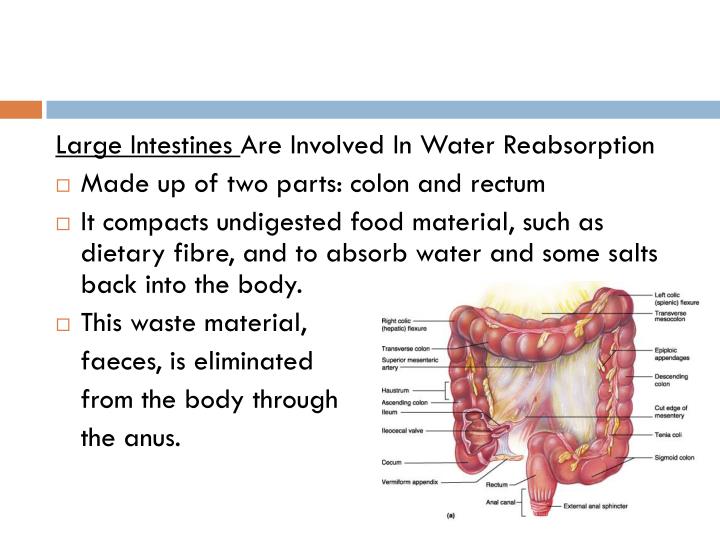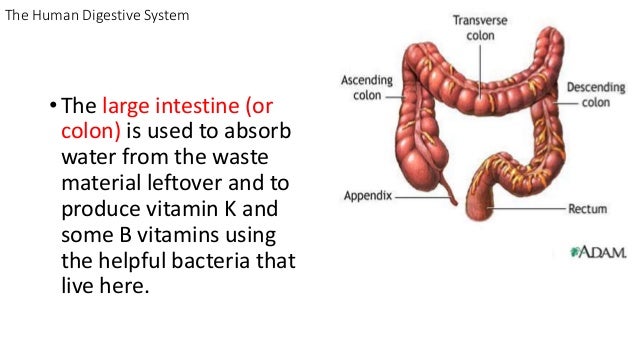

The highest loss of water with faeces occurs on roughage diets. In the large intestine 70-90% of secreted water is re-absorbed, depending upon the rate of passage of the intestinal digesta and the water-binding capacity of the undigested parts of the feed. The ingestion of 1 kg of dry matter as hay or straw requires the secretion of 12-14 litres of water while 1 kg of concentrate requires only 7 litres.įlows of liquid and electrolytes in the gut of the horse:ĭaily flow of liquid and electrolytes from the small to the large inte stine:

The amount of water secreted into the gastrointestinal tract is 15-20 litres per 100 kg of body weight per day (Table 9).This fluid contains high concentrations of sodium and chloride, but efficient absorption mechanisms in the small and large intestines effectively re-absorb both water and minerals back to the blood. You may schedule a consultation by phone or internet to learn if you are a candidate for a colon resection or J-pouch surgery.Large amounts of water and electrolytes are exchanged daily between the contents of the gastrointestinal tract and the blood. Karen Zaghiyan, MD, FACS, FASCRS, is a double board-certified colorectal surgeon and one of the leading experts in J-pouch surgery in Los Angeles, California. Patients with short bowel syndrome will most often require supplemental fluid and sometimes intravenous nutrition because the small intestine plays a profound role in absorption of nutrients and electrolytes. Short bowel syndrome can happen if the majority of one’s small intestine is removed, taking one from, say, 22 feet of small intestine, down to 4 feet. Patients undergoing extensive small bowel resection may be left with short bowel.

#DOES THE LARGE INTESTINE ABSORB WATER FULL#
It plays little role in metabolism and people can live full lives without their large intestine.

The large intestine or colon has one primary role, water and electrolyte absorption to concentrate the stool. The answer to the first question, believe it or not is - YES! You can live without a large intestine - something that comes as a shock to many people. Small and large actually refers to the diameter of the two organs. Which organ is longer? Contrary to how the terminology makes it seem - small and large - the small intestine is longer (22 feet) and the large intestine shorter (5 feet). The small intestine absorbs vitamins and nutrients from the food and drink we consume. The small intestine or small bowel, on the other hand, has three parts – the duodenum, jejunum and ileum. The colon removes and absorbs water, is the catalyst for the fermentation of remining material and expels solid matter in the form of feces into the rectum for removal from the body. From right to left, it is composed of the cecum, ascending colon, transverse colon, descending colon and sigmoid colon. We categorize the colon in five distinct parts. The large intestine, also known as the colon or large bowel spans most of the length and width of the abdomen in an upside-down U shape. First, we have to define the two intestines in our bodies.


 0 kommentar(er)
0 kommentar(er)
